Senolytic vaccination offers a promising approach to combating ageing-associated cellular senescence, a state marked by irreversible cell cycle arrest. Published in Nature Ageing, this innovative strategy aims to eradicate senescent cells, known for their dual role in protection against malignancy and contribution to age-related diseases. While senescence initially serves as a protective mechanism against cancer, the accumulation of these cells can lead to a Senescence-Associated Secretory Phenotype (SASP), triggering chronic inflammation and tissue dysfunction. Senescent cells are implicated in various age-related ailments, including cardiovascular diseases like atherosclerosis, where they exacerbate plaque progression and endothelial dysfunction. Targeting senescent cells through vaccination holds the potential for extending lifespan and mitigating age-related pathologies, even before their onset. (Suda et al., 2021)
Cellular Senescence: Why We Need Senolytic Vaccines?
Cellular ageing, often called cellular senescence, is a hallmark of ageing. It is a state in which cells undergo permanent cell cycle arrest, typically in response to factors such as DNA damage or other stressors. Senescent cells can be identified by various molecular markers, including increased expression of cell cycle inhibitors like p16Ink4a, p53 and p19arf, as well as markers of DNA damage and senescence-associated β-galactosidase (SA-β-gal) activity. While cellular senescence can initially serve as a protective mechanism against cancer, the accumulation of senescent cells over time has been linked to various age-related diseases, including cardiovascular diseases like atherosclerosis. Senescent cells exhibit a Senescence-Associated Secretory Phenotype (SASP), wherein they secrete pro-inflammatory molecules that contribute to tissue inflammation and dysfunction.
Given the influential role of senescent cells in health and disease, there is significant interest in developing strategies to manipulate their presence. One such approach is senolytic vaccination. Senolytic vaccination involves the creation of vaccines designed to activate the immune system, specifically against senescent cells. These vaccines work by training the immune system to recognise distinct markers present in senescent cells. Once primed, the immune system can effectively respond to target and eliminate these cells. The concept behind senolytic vaccination holds promise for combating age-related diseases and potentially extending a healthy lifespan. By harnessing the body's immune system to identify and eliminate senescent cells, this approach offers a targeted and potentially less invasive method compared to traditional therapies.
Senolytic Vaccination GPNMB: Targeting Ageing Cells
A recent study proposed an innovative approach through channelling the immune system to target senescent cells using a vaccine. Researchers identified glycoprotein nonmetastatic melanoma protein B (GPNMB) as a potential senescence-specific antigen by analyzing transcriptome datasets from senescent cells.GPNMB expression increases in ageing senescent vascular endothelial cells as well as in samples from atherosclerotic patients. Researchers have developed a vaccine using peptides extracted from the extracellular domain of GPNMB. This vaccine has been found to trigger a response wherein antibodies enhance the immune system's ability to effectively eliminate GPNMB-expressing senescent cells in mice. This vaccination approach has shown promise in reducing senescent cell burden, improving metabolic parameters, and decreasing atherosclerotic plaque formation in mouse models. This vaccination approach reduced senescent cell burden, improved metabolic parameters, and decreased atherosclerotic plaque in mouse models.
Furthermore, vaccination with GPNMB extended the lifespan of a mouse model of accelerated ageing, indicating its potential for treating age-related conditions. The study highlights the versatility of GPNMB, a protein previously implicated in inflammation and disease, as a target for senolytic vaccination. However, the full implications of senescent cells and GPNMB in ageing and disease require further investigation. This concept is still under pre-clinical research, with studies in mice showing promise. More research is needed to determine its safety and efficacy in humans. (Lear & Finkel, 2022)
Current Senolytic Supplements Available in the Market
As senolytic vaccinations undergo pre-clinical studies, the market currently offers supplements supported by clinical research, such as fisetin and quercetin. Formulated by Decode Age, SeneVit combines these two compounds to act as a potent senolytic activator. This supplement emerges as a powerful senolytic for targeting zombie or senescent cells. Its unique blend includes fisetin, quercetin, apigenin, and piper longum, each selected for its remarkable properties. Fisetin, the primary ingredient, promotes the elimination of senescent cells. Utilising the synergistic effects of its constituents, SeneVit maximises senolytic activity. This targeted approach not only eradicates senescent cells but also promotes overall health. From combating inflammation to reducing oxidative stress, SeneVit offers a comprehensive solution for cellular rejuvenation.
Benefits of Each Ingredient in SeneVit
- Fisetin: known for its antioxidant, anti-inflammatory, and neuroprotective properties.
- Quercetin: renowned for its antioxidant and anti-inflammatory effects and its potential to support heart health, reduce allergy symptoms, and improve exercise performance.
- Apigenin: researched for its potential anti-cancer, anti-inflammatory, and antioxidant properties.
- Piper Longum: improves the bioavailability of other ingredients, and has anti-inflammatory, anti-oxidant and digestive properties.
Summary
Scientists worldwide are actively developing potent vaccinations targeting various mechanisms of ageing, such as the senolytic GPNMB vaccination. These efforts promise to bring in a new era of technologies aimed directly at addressing the process of ageing itself.
The advent of these technologies holds immense promise for slowing down and potentially reversing ageing, thereby significantly improving treatments for ageing-related diseases. Senolytic vaccination treatments, for instance, target the root cause of these ailments: ageing.
While these advancements are indeed fascinating, it's worth noting that our current best tool for slowing down ageing is our lifestyle. While longevity technologies are still in development and may take decades to prove, strategies such as proper nutrition and SeneVit supplementation offer immediate benefits for extending lifespans by eliminating senescent cells.
If you’d like to learn more about how to take longevity to the next level, check out Decode Age Supplements.
References:
Senolytic vaccination improves normal and pathological age-related phenotypes and increases lifespan in progeroid mice.
(Suda, M., Shimizu, I., Katsuumi, G., Yoshida, Y., Hayashi, Y., Ikegami, R., Matsumoto, N., Yoshida, Y., Mikawa, R., Katayama, A., Wada, J., Seki, M., Suzuki, Y., Iwama, A., Nakagami, H., Nagasawa, A., Morishita, R., Sugimoto, M., Okuda, S., . . . Minamino, T. (2021). Senolytic vaccination improves normal and pathological age-related phenotypes and increases lifespan in progeroid mice. Nature Aging, 1(12), 1117-1126.)
Senolytic vaccination: A new mandate for cardiovascular health?
(Lear, T. B., & Finkel, T. (2022). Senolytic vaccination: A new mandate for cardiovascular health? The Journal of Cardiovascular Aging, 2(2).)
FAQs
1) What are examples of senolytic supplements?
Senolytic supplements like fisetin and quercetin target and remove senescent cells, which contribute to age-related health issues. These natural compound extracts offer multiple health benefits by combating ageing processes and reducing the risk of age-related diseases.
2) What is the function of the senolytic?
Senolytics serve a crucial function by targeting non-dividing senescent cells in the body. These cells are associated with ageing and can cause various age-related diseases. Senolytics work by disrupting the anti-apoptotic pathways within senescent cells, essentially prompting them to undergo apoptosis or programmed cell death, potentially slowing down the ageing process and reducing the risk of age-related illnesses.
3) What kills senescent cells?
Senescent cells, which are associated with ageing and disease, are primarily eliminated by the immune system. As we age, the efficiency of the immune system declines, leading to an accumulation of senescent cells. To combat this, enhancing immune function becomes crucial. Strategies such as vaccinations to boost immunity and supplements like fisetin and quercetin play a pivotal role in the clearance of senescent cells.
4) How does Decode Age SeneVit work?
Decode Age SeneVit targets and eliminates senescent cells, enhancing cellular function. It improves cognitive function, offers antioxidant support, enhances joint and bone health, boosts immunity, supports cardiovascular health, improves skin health, and aids in healthy ageing and metabolic health. Its enhanced bioavailability ensures optimal effectiveness.
5) Does senolytic vaccination improve pathological ageing?
Senolytic vaccination targeting GPNMB has demonstrated efficacy in ameliorating pathological ageing in mice. By reducing GPNMB-positive cells and senescence, it enhances metabolic function, particularly in atherosclerosis. Immunisation against GPNMB also extends lifespan in progeroid mice, offering a promising therapeutic strategy for combating age-related pathologies.

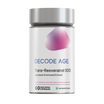

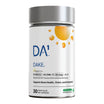
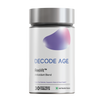
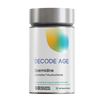
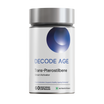
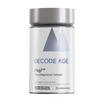
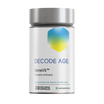

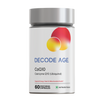


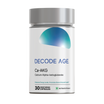
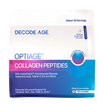
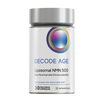

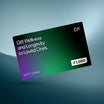



Leave a comment
All comments are moderated before being published.
This site is protected by hCaptcha and the hCaptcha Privacy Policy and Terms of Service apply.